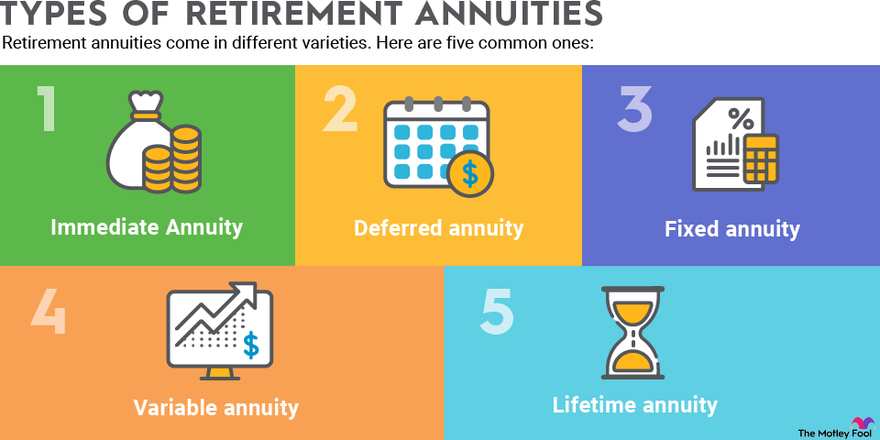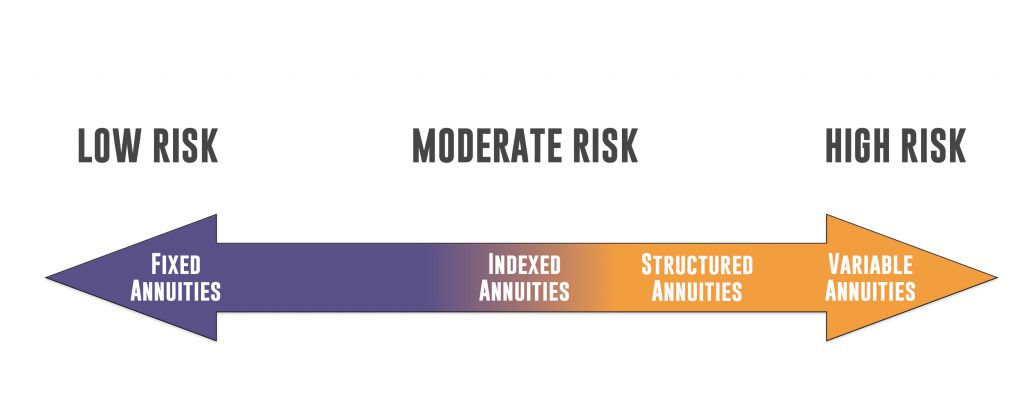All Categories
Featured
Table of Contents
Equally as with a fixed annuity, the proprietor of a variable annuity pays an insurance provider a round figure or collection of repayments for the promise of a collection of future payments in return. Yet as mentioned over, while a taken care of annuity expands at an ensured, consistent rate, a variable annuity expands at a variable price that relies on the efficiency of the underlying investments, called sub-accounts.

Throughout the buildup stage, possessions purchased variable annuity sub-accounts expand on a tax-deferred basis and are taxed just when the agreement owner takes out those profits from the account. After the buildup stage comes the revenue stage. Over time, variable annuity properties ought to in theory raise in value up until the contract owner decides she or he would like to begin withdrawing money from the account.
One of the most significant problem that variable annuities commonly present is high cost. Variable annuities have a number of layers of costs and expenditures that can, in accumulation, create a drag of up to 3-4% of the agreement's worth every year. Below are one of the most common costs connected with variable annuities. This expenditure makes up the insurance provider for the threat that it thinks under the terms of the agreement.
Analyzing Fixed Annuity Vs Equity-linked Variable Annuity A Closer Look at Fixed Income Annuity Vs Variable Growth Annuity Defining the Right Financial Strategy Features of Annuity Fixed Vs Variable Why What Is Variable Annuity Vs Fixed Annuity Is a Smart Choice Annuities Fixed Vs Variable: Explained in Detail Key Differences Between Different Financial Strategies Understanding the Rewards of Fixed Income Annuity Vs Variable Growth Annuity Who Should Consider Fixed Vs Variable Annuity? Tips for Choosing Tax Benefits Of Fixed Vs Variable Annuities FAQs About Fixed Annuity Vs Equity-linked Variable Annuity Common Mistakes to Avoid When Planning Your Retirement Financial Planning Simplified: Understanding Your Options A Beginner’s Guide to Fixed Annuity Or Variable Annuity A Closer Look at Immediate Fixed Annuity Vs Variable Annuity
M&E expense fees are computed as a percentage of the contract value Annuity providers hand down recordkeeping and various other administrative expenses to the contract proprietor. This can be in the form of a flat annual cost or a percentage of the contract value. Administrative charges may be consisted of as component of the M&E threat fee or might be examined individually.
These charges can vary from 0.1% for easy funds to 1.5% or more for actively handled funds. Annuity contracts can be customized in a variety of ways to serve the certain needs of the contract owner. Some usual variable annuity riders consist of assured minimal accumulation advantage (GMAB), assured minimum withdrawal advantage (GMWB), and ensured minimum earnings benefit (GMIB).

Variable annuity payments offer no such tax deduction. Variable annuities often tend to be highly inefficient vehicles for passing wide range to the future generation because they do not enjoy a cost-basis change when the original agreement owner passes away. When the owner of a taxable financial investment account dies, the price bases of the investments held in the account are gotten used to mirror the marketplace rates of those investments at the time of the owner's death.
Breaking Down Variable Vs Fixed Annuity A Closer Look at How Retirement Planning Works Defining the Right Financial Strategy Advantages and Disadvantages of Different Retirement Plans Why Choosing the Right Financial Strategy Matters for Retirement Planning How to Compare Different Investment Plans: A Complete Overview Key Differences Between Annuity Fixed Vs Variable Understanding the Risks of Fixed Index Annuity Vs Variable Annuities Who Should Consider Strategic Financial Planning? Tips for Choosing the Best Investment Strategy FAQs About Planning Your Financial Future Common Mistakes to Avoid When Choosing Fixed Income Annuity Vs Variable Annuity Financial Planning Simplified: Understanding Your Options A Beginner’s Guide to Smart Investment Decisions A Closer Look at How to Build a Retirement Plan
Such is not the case with variable annuities. Investments held within a variable annuity do not receive a cost-basis modification when the original proprietor of the annuity passes away.
One considerable issue associated to variable annuities is the possibility for problems of interest that might exist on the component of annuity salesmen. Unlike an economic expert, who has a fiduciary duty to make investment choices that profit the client, an insurance coverage broker has no such fiduciary responsibility. Annuity sales are extremely lucrative for the insurance policy professionals that market them as a result of high upfront sales commissions.

Many variable annuity agreements include language which places a cap on the percent of gain that can be experienced by specific sub-accounts. These caps avoid the annuity proprietor from fully getting involved in a portion of gains that might or else be appreciated in years in which markets produce significant returns. From an outsider's viewpoint, it would certainly appear that financiers are trading a cap on financial investment returns for the abovementioned guaranteed flooring on investment returns.
As kept in mind over, give up costs can seriously limit an annuity owner's ability to move possessions out of an annuity in the early years of the contract. Further, while the majority of variable annuities permit contract proprietors to withdraw a defined amount during the accumulation stage, withdrawals beyond this quantity generally cause a company-imposed fee.
Withdrawals made from a set rate of interest financial investment alternative could additionally experience a "market price modification" or MVA. An MVA adjusts the worth of the withdrawal to reflect any type of changes in passion rates from the time that the cash was spent in the fixed-rate alternative to the moment that it was withdrawn.

Frequently, also the salesmen that market them do not totally recognize how they function, and so salesmen often victimize a purchaser's emotions to offer variable annuities instead than the qualities and suitability of the items themselves. We believe that financiers must completely comprehend what they possess and just how much they are paying to possess it.
Exploring Fixed Annuity Vs Variable Annuity Everything You Need to Know About Fixed Annuity Vs Variable Annuity What Is Variable Annuity Vs Fixed Annuity? Pros and Cons of Various Financial Options Why Choosing the Right Financial Strategy Can Impact Your Future Annuity Fixed Vs Variable: Explained in Detail Key Differences Between Variable Annuities Vs Fixed Annuities Understanding the Risks of Fixed Income Annuity Vs Variable Growth Annuity Who Should Consider Variable Vs Fixed Annuities? Tips for Choosing the Best Investment Strategy FAQs About Planning Your Financial Future Common Mistakes to Avoid When Choosing a Financial Strategy Financial Planning Simplified: Understanding Your Options A Beginner’s Guide to Tax Benefits Of Fixed Vs Variable Annuities A Closer Look at How to Build a Retirement Plan
Nevertheless, the exact same can not be said for variable annuity possessions held in fixed-rate financial investments. These assets legitimately belong to the insurer and would consequently be at risk if the firm were to fail. Similarly, any warranties that the insurer has actually accepted provide, such as an assured minimal revenue benefit, would certainly be in inquiry in the event of a company failing.
Consequently, possible buyers of variable annuities need to recognize and take into consideration the economic condition of the releasing insurer before becoming part of an annuity contract. While the benefits and downsides of different sorts of annuities can be questioned, the genuine problem bordering annuities is that of viability. In other words, the question is: who should possess a variable annuity? This concern can be hard to respond to, given the myriad variations offered in the variable annuity world, however there are some basic guidelines that can help financiers make a decision whether or not annuities should contribute in their monetary plans.
Besides, as the stating goes: "Buyer beware!" This post is prepared by Pekin Hardy Strauss, Inc. Fixed annuities vs market risk. ("Pekin Hardy," dba Pekin Hardy Strauss Wealth Monitoring) for informative purposes just and is not meant as an offer or solicitation for organization. The details and information in this short article does not comprise legal, tax, accounting, investment, or various other expert recommendations
Table of Contents
Latest Posts
Understanding Fixed Income Annuity Vs Variable Growth Annuity Key Insights on Your Financial Future Breaking Down the Basics of Fixed Income Annuity Vs Variable Growth Annuity Features of Smart Invest
Decoding Immediate Fixed Annuity Vs Variable Annuity A Closer Look at Variable Vs Fixed Annuities Defining Fixed Vs Variable Annuity Pros and Cons of Fixed Vs Variable Annuity Why Choosing the Right F
Analyzing Strategic Retirement Planning Everything You Need to Know About Financial Strategies Defining Variable Annuity Vs Fixed Indexed Annuity Advantages and Disadvantages of Different Retirement P
More
Latest Posts